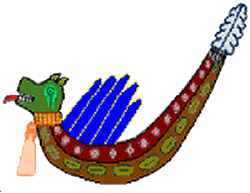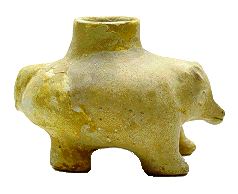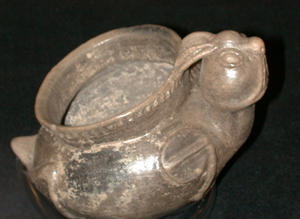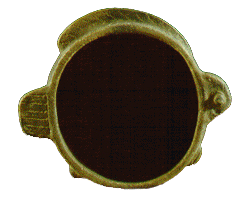|
The Three-Layer Universe
Indians of Arkansas and the South believed that they lived in a three-layer universe. This universe included an Above World, a Below World, and a Middle World in between. Humans lived in the Middle World. Many artistic images represent the individual layers. The winged serpent—a fantastic creature with the body of a snake, the head of a panther, and the wings of a bird—represented the entire universe of all three layers. How could this be so? Use your mouse to explore the winged serpent image to find out why it represents the three-layer universe.  The wings (along with birds, lightning, and other figures associated with the sky) represent the Above World that exists beyond the dome of the sky. The Above World is the realm of order and stability. It is the source of creative power. The souls of the ancestors reside in the Above World, so it also represents the legacy of past achievements. The panther (along with images of other earthly creatures) represents the Middle World where humans live along with animals and plants. Happiness and success in the Middle World depend on balancing the forces of the Above World and the Below World. People can maintain that balance through various kinds of rituals. The serpent’s body (along with other reptiles, amphibians, certain insects including spiders, and fish) represents the watery Below World. The Below World has characteristics opposite those of the Above World, so it is the realm of disorder and chaos. It is the source of destructive power. But since the sun rises each day after its nightly passage across the Below World, it also holds the promise for a bright future. Indians of Arkansas and the South decorated many of their artifacts with images symbolizing the three-layer universe. Now that you know the properties of each layer, let’s see if you can identify the layer or realm associated with several artifact designs.
|







